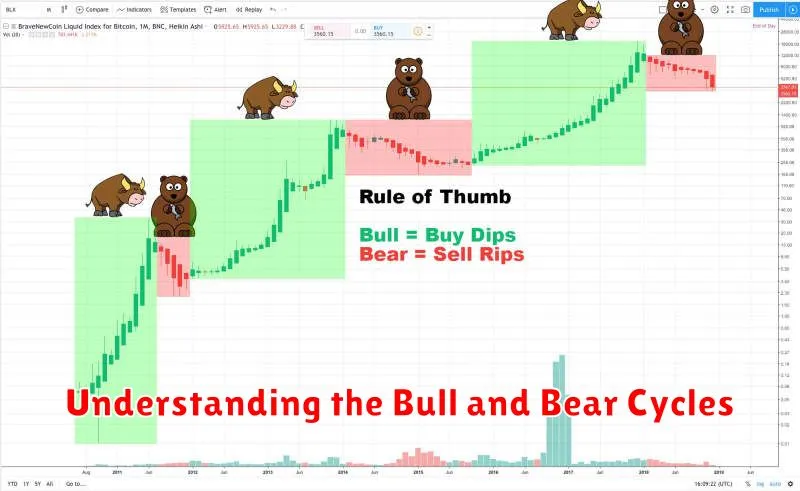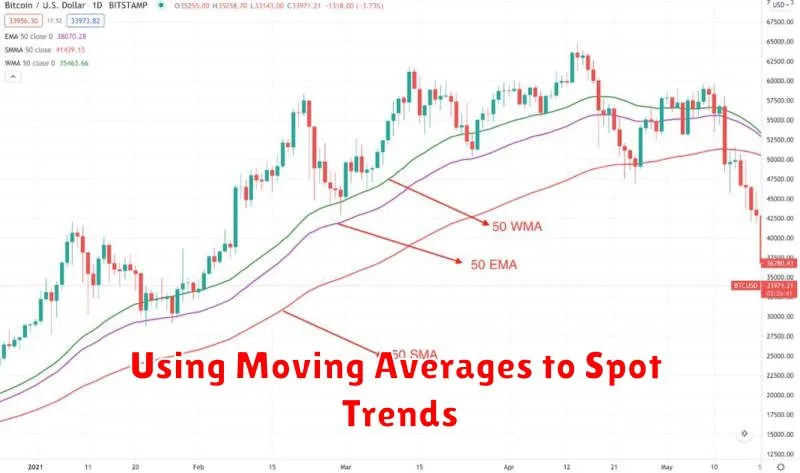Mastering the art of cryptocurrency market timing is the holy grail for many investors seeking significant returns. This comprehensive guide, “How to Time the Crypto Market Like a Pro,” will equip you with the strategies and techniques to navigate the volatile landscape of the crypto market. Learn how to identify key indicators, interpret market trends, and mitigate risk to successfully time your trades and maximize your profit potential. Discover the secrets to becoming a more successful crypto investor.
Is Market Timing Possible in Crypto?

The short answer is: no one can consistently time the crypto market. While some individuals may experience short-term success, predicting long-term price movements with accuracy remains elusive.
The crypto market is incredibly volatile, influenced by numerous factors including regulatory changes, technological advancements, market sentiment, and large-scale trading events. These factors are often unpredictable and interconnected, making accurate forecasting extremely difficult.
Attempts at market timing often rely on technical analysis (chart patterns, indicators) and fundamental analysis (project evaluation, adoption rates). However, even sophisticated methods fail to account for the inherent unpredictability of the market. Unexpected news or events can drastically shift prices in a short period, rendering even the most well-researched predictions invalid.
Instead of focusing on market timing, a more effective strategy is to adopt a long-term investment approach, diversifying your portfolio and gradually accumulating assets over time. This mitigates the risk associated with trying to predict short-term market fluctuations.
Understanding the Bull and Bear Cycles

Mastering the cryptocurrency market requires understanding its cyclical nature, primarily characterized by bull and bear markets. These cycles are driven by a complex interplay of factors, including investor sentiment, technological advancements, regulatory changes, and macroeconomic conditions.
A bull market is characterized by rising prices and optimism. Investors are confident, driving increased demand and pushing prices higher. This phase is often associated with significant gains and high trading volumes.
Conversely, a bear market is defined by falling prices and pessimism. Investor confidence erodes, leading to selling pressure and price declines. Bear markets are typically characterized by lower trading volumes and significant losses for investors.
Identifying the current phase of the market cycle is crucial. While predicting the exact timing of market transitions is impossible, recognizing the signs of a bull or bear market can inform your investment strategies, allowing for more informed decisions regarding buying, holding, or selling crypto assets. Analyzing factors such as price trends, market capitalization, and on-chain metrics are vital for gauging market sentiment and predicting potential shifts.
It’s important to remember that these cycles are not predictable with perfect accuracy. While understanding the characteristics of bull and bear markets is crucial for navigating the crypto market, successful timing often relies on a combination of market analysis, risk management, and a long-term perspective.
Using Moving Averages to Spot Trends

Moving averages are a powerful tool for identifying trends in the volatile crypto market. They smooth out price fluctuations, making it easier to discern the underlying direction.
Several types exist, each with its strengths. Simple Moving Averages (SMA) calculate the average price over a specific period, while Exponential Moving Averages (EMA) give more weight to recent prices, making them more responsive to market shifts.
Identifying trends involves observing the relationship between different moving averages. A common technique is using a combination, such as a fast-moving average (e.g., 50-day EMA) and a slow-moving average (e.g., 200-day EMA). When the fast average crosses above the slow average (a “golden cross“), it suggests a bullish trend. Conversely, a “death cross” (fast average crossing below slow average) indicates a bearish trend.
However, moving averages are lagging indicators; they react to price changes rather than predicting them. Therefore, they’re most effective when used in conjunction with other technical analysis tools for confirmation and a more comprehensive market view. Consider combining them with volume analysis and support/resistance levels for improved accuracy.
How to Identify a Market Reversal

Identifying a market reversal in crypto requires a keen eye and a multi-faceted approach. It’s not an exact science, but recognizing key indicators significantly improves your chances of successful timing.
Price Action is paramount. Look for significant price movements that break through support or resistance levels. A strong move past a previous resistance level suggests a potential bullish reversal, while a break below a support level could signal a bearish one. Volume is equally crucial; high volume confirms the strength of a break, while low volume might indicate a temporary fluctuation.
Technical indicators provide further insights. Moving averages (e.g., 50-day and 200-day) can highlight potential trend changes. A bullish crossover (shorter-term MA crossing above the longer-term MA) hints at a potential bullish reversal, while a bearish crossover indicates the opposite. RSI (Relative Strength Index) and MACD (Moving Average Convergence Divergence) can also reveal overbought or oversold conditions, which might precede a reversal.
Sentiment analysis plays a vital role. Extremely bullish or bearish sentiment often signals market tops or bottoms. Observe social media trends, news headlines, and overall market sentiment to gauge investor confidence. A shift in prevailing sentiment can often precede a major reversal.
Remember, no single indicator guarantees a reversal. Successful market timing requires a holistic approach, combining price action, technical indicators, and sentiment analysis. Patience and discipline are crucial; avoid impulsive decisions based on a single signal.
Common Market Timing Mistakes to Avoid

One of the biggest mistakes is trying to time the bottom or top. Market tops and bottoms are notoriously difficult to predict with accuracy. Focusing on entry and exit points based on short-term price fluctuations often leads to missed opportunities and losses.
Another common error is overreacting to short-term news. While news events can influence prices, basing trading decisions solely on daily or weekly headlines often results in emotional, impulsive decisions rather than informed ones. Consider the bigger picture and long-term trends.
Ignoring fundamental analysis is detrimental. Focusing solely on technical analysis while neglecting the underlying technology, adoption rates, and market sentiment of a cryptocurrency can lead to poor investment choices. A strong fundamental foundation supports long-term price appreciation.
Chasing quick profits is risky. The lure of fast returns can lead to impulsive trades in volatile markets, often resulting in significant losses. A well-defined, long-term strategy incorporating risk management is crucial for sustainable success.
Finally, lack of diversification exposes investors to unnecessary risk. Concentrating investments in a single cryptocurrency, regardless of its perceived potential, is unwise. Spreading investments across different cryptocurrencies or asset classes helps mitigate overall risk.
When to Enter and Exit a Trade

Timing the crypto market effectively requires a disciplined approach to entering and exiting trades. Successful trading hinges on identifying optimal entry and exit points, maximizing profits and minimizing losses.
Entering a trade should ideally occur when the market shows signs of a potential upswing. This could involve observing technical indicators like a bullish crossover of moving averages, or a breakout above a significant resistance level. Fundamental analysis, considering news events and project developments, can also inform entry decisions. Avoid impulsive entries based solely on hype or fear.
Exiting a trade is equally crucial. Predetermined profit targets, based on technical or fundamental analysis, should guide your exit strategy. Stop-loss orders are vital to limit potential losses. Consider using trailing stop-losses to lock in profits as the price moves favorably. Recognizing signs of a market reversal, such as bearish technical indicators or negative news, can also be a trigger for exiting a trade.
Ultimately, effective trade management involves a combination of technical and fundamental analysis, risk management strategies, and disciplined adherence to a predefined trading plan. Consistent practice and learning from both successes and failures are key to mastering the art of timing the crypto market.

